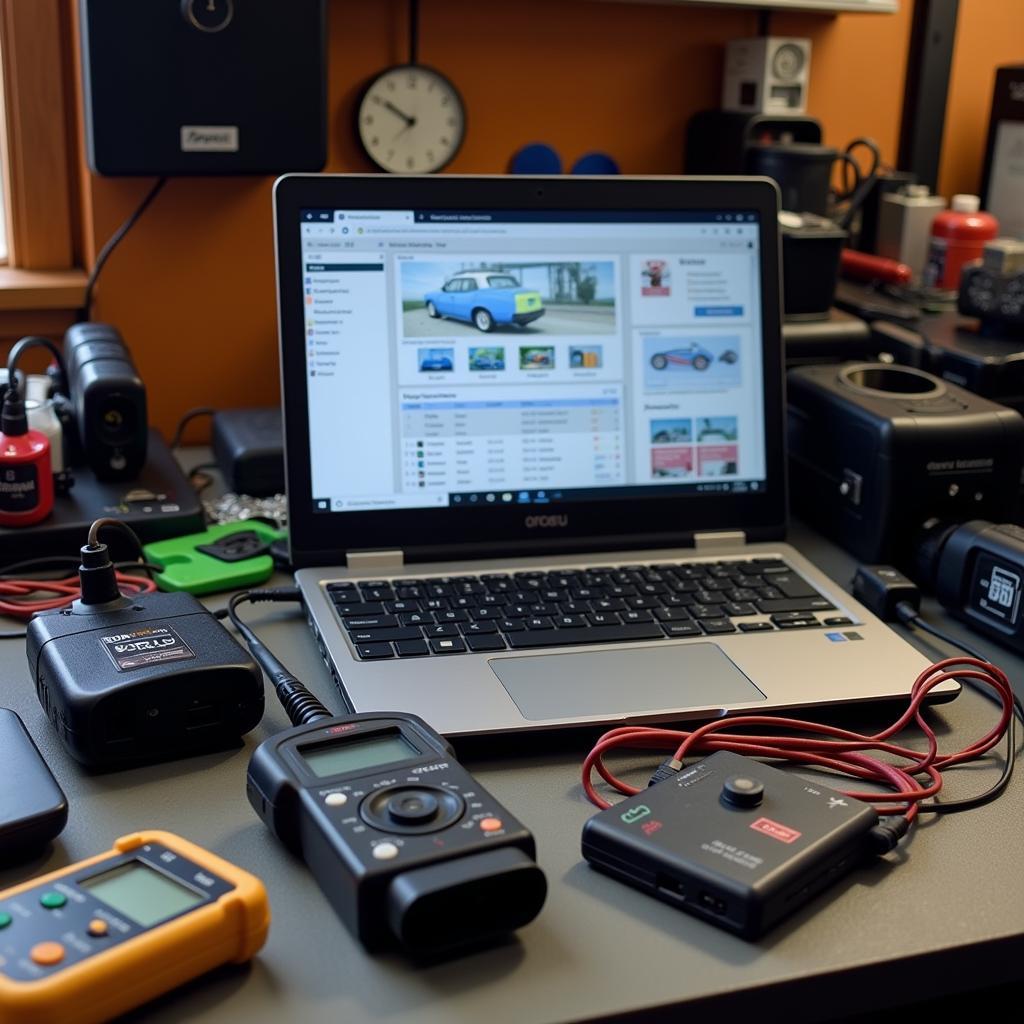Diy Car Diagnostics is becoming increasingly popular as people seek to save money and gain a better understanding of their vehicles. With the right tools and information, you can diagnose and troubleshoot many common car problems yourself, avoiding expensive trips to the mechanic.
 Car Diagnostic Tools
Car Diagnostic Tools
Understanding the Basics of Car Diagnostics
Modern vehicles are equipped with onboard computers that monitor various systems and sensors. These computers generate Diagnostic Trouble Codes (DTCs) when they detect a malfunction. DIY car diagnostics involve accessing and interpreting these codes to identify the root cause of the problem.
One of the most important tools for DIY car diagnostics is an OBD2 scanner. This handheld device connects to your vehicle’s OBD2 port, typically located under the dashboard, and allows you to read and clear DTCs.
Choosing the Right Diagnostic Tools
While an OBD2 scanner is essential, other tools can be invaluable for DIY car diagnostics, depending on your skill level and the complexity of the problem:
-
Multimeter: This versatile tool measures voltage, current, and resistance, allowing you to test various electrical components.
-
Code Reader vs. Scan Tool: Understand the difference. Code readers simply display DTCs, while scan tools offer advanced features like live data streaming and bi-directional control.
-
Diagnostic Software: For more in-depth diagnostics, consider using diagnostic software on your laptop. These programs offer comprehensive vehicle data, troubleshooting guides, and sometimes even repair instructions.
 Mechanic Using OBD2 Scanner on a Vehicle
Mechanic Using OBD2 Scanner on a Vehicle
Essential DIY Car Diagnostic Tips
-
Start with the Basics: Before diving into complex diagnostics, check the owner’s manual and inspect basic components like fluids, belts, and hoses.
-
Research DTCs Thoroughly: Understanding the specific meaning of a DTC is crucial for accurate diagnosis. Online resources and forums can provide valuable insights.
-
Don’t Be Afraid to Ask for Help: If you’re unsure about something, don’t hesitate to seek help from online communities, auto parts stores, or a trusted mechanic.
-
Invest in Quality Tools: While it’s tempting to go for the cheapest options, investing in quality diagnostic tools will pay off in the long run by providing accurate readings and lasting performance.
Common Car Problems You Can Diagnose Yourself
Many car problems manifest through specific symptoms. Here are some common issues you can diagnose yourself using DIY methods:
-
Check Engine Light: This is a broad indicator, and a DTC scan is necessary to pinpoint the issue.
-
Car Won’t Start: This could be due to a dead battery, faulty starter motor, or issues with the ignition system.
-
Rough Idling: This might indicate problems with spark plugs, fuel injectors, or the air intake system.
-
Braking Issues: Spongy brakes, grinding noises, or pulling to one side while braking could signal problems with brake pads, rotors, or calipers.
 Car Dashboard Warning Lights
Car Dashboard Warning Lights
Conclusion
DIY car diagnostics can be a rewarding experience, empowering you to take control of your vehicle’s maintenance and save money. Remember to start with basic checks, invest in quality tools, and research thoroughly before attempting any repairs. While some issues may require professional attention, many common car problems can be diagnosed and even fixed at home with the right approach and information.

Leave a Reply